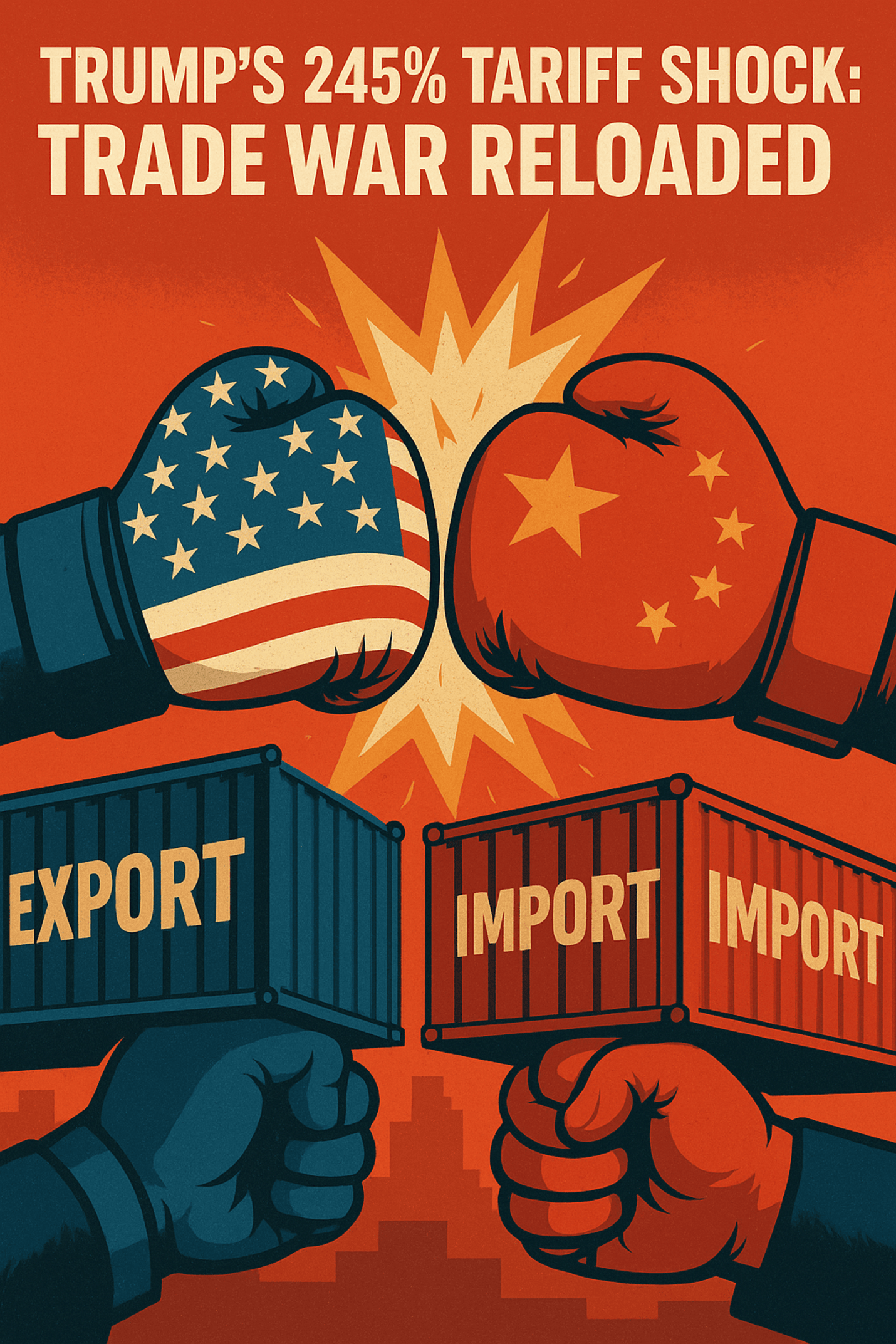US Steel Tariffs: A Dilemma for Indian Manufacturers
While higher import tariffs may lead to uncertainty, companies such as JSW Steel and Hindalco’s Novelis are finding positive aspects in potential policy adjustments and the benefits of local production.
Summary:
The United States’ decision to double tariffs on steel and aluminium imports has stirred concerns across global markets, yet Indian companies with manufacturing operations in the US—like JSW Steel and Hindalco’s Novelis—are preparing to navigate the changes with cautious optimism. With expectations of limited overall impact due to counterbalancing trade measures and localized production, Indian firms might turn potential headwinds into competitive advantages.
US Doubles Down on Steel Tariffs: A Global Ripple Effect
In a notable protectionist measure, the Biden administration declared that it would increase tariffs on certain steel and aluminum imports by double. This policy aims to protect American industry from alleged unfair competition, especially from Chinese companies rerouting materials through third countries. While this aggressive trade stance may ruffle international relations, it has a more nuanced impact on manufacturing for Indian companies within the United States.
For Indian metals giants like JSW Steel and Hindalco’s Novelis, the development presents a mix of challenges and opportunities. Though global trade uncertainty has increased, their established local manufacturing presence offers insulation from direct tariff penalties and positions them favourably in a more protected domestic environment.
JSW Steel: Tariff Shock or Strategic Advantage?
JSW Steel, one of India’s largest steel producers, has significant operations in the US, including facilities in Texas and Ohio. The company has been working to improve the performance of its American units, which have historically seen profitability challenges due to operational issues and volatile market conditions.
With the new tariffs in place, JSW Steel’s US business may actually stand to gain as domestic producers become more competitive against imports.
“Our American operations have been gradually improving, and with these tariffs, we expect positive contributions moving forward,” a senior JSW official was quoted as saying.
The company has already invested over $1 billion in modernizing its US plants. With increased tariffs likely to raise the cost of imported steel, domestic players like JSW’s US units could benefit from increased demand and improved margins. However, the full extent of the impact will depend on whether JSW sources raw materials or semi-finished products from outside the US, which might still be affected by the tariff hikes.
Novelis (Hindalco): Neutral to Positive Outlook Amid Trade Complexity
Novelis, a subsidiary of Hindalco Industries based in Atlanta, is a prominent global provider of rolled aluminium products and a recycler of aluminium. The company has a robust US manufacturing footprint, which strategically positions it to weather import-related trade turbulence.
Commenting on the tariff development, a Novelis spokesperson indicated the company expects a “neutral to positive” outcome, subject to the outcomes of ongoing trade negotiations and potential exemptions.
Novelis’ existing domestic production capacity means the company is less reliant on imported aluminium, which cushions it from the immediate effects of tariff increases. Additionally, given its involvement in high-growth segments like automotive and beverage manufacturing, demand for its products is expected to remain strong.
Still, executives are keeping a close eye on trade policy dynamics, particularly rules of origin and any potential retaliatory measures from affected countries, which could alter cost structures.
Mixed Signals from Analysts: Limited Immediate Impact, Long-Term Uncertainty
Although the tariffs are attracting significant attention, many analysts believe that their overall effect on Indian companies operating in the US may be minimal. This is due to several reasons:
1. Local Manufacturing Mitigates Impact: Indian companies with manufacturing facilities in the US can bypass direct tariffs.
2. Existing Safeguard Duties: Current safeguard measures under Section 232 have already set up barriers for imports, and the recent actions are seen by some as largely symbolic.
3. Potential for Exemptions: Ongoing trade negotiations might provide opportunities for exclusions or quotas that could safeguard allied nations, including India.
4. Global Capacity Constraints: With the supply of aluminium and steel already limited worldwide, changes in tariffs may lead to adjustments in supply chains rather than a decrease in demand.
However, uncertainty continues to be a significant issue. If global supply chains suffer from retaliatory measures or if trade conflicts escalate, even companies that are locally established could experience rising costs or fluctuations in demand.
Global Competitiveness: Indian Companies Poised to Pivot
From a strategic standpoint, these tariffs could prompt Indian conglomerates to double down on localizing production for global markets. The recent move may also serve as a wake-up call for companies overly dependent on exports to build capacity in key consumer markets like the US.
Additionally, firms with sustainability-aligned growth models—such as Novelis with its recycling initiatives—could capitalize on US government preferences for cleaner, domestically produced metals.
Future Outlook: Navigating Policy with Strategy
Looking forward, the full impact of the new US tariffs on Indian companies will hinge on several variables:
Bilateral Trade Talks: Will India negotiate exclusions or special treatment?
Input Cost Trends: Will tariffs increase raw material costs for Indian companies operating abroad?
Competitor Behavior: How will Chinese and European rivals adapt or respond?
US Infrastructure Push: Will the US government’s focus on domestic infrastructure projects provide sustained demand?
For now, companies like JSW and Novelis are maintaining a cautious but optimistic stance. Their investment in US-based capacity may now offer them a protective moat, making them beneficiaries rather than victims of rising trade walls.
Conclusion:
The increase in steel and aluminum tariffs by the US creates a complex situation for Indian companies operating in America. While global uncertainties remain, firms with established US production, like JSW Steel and Novelis, appear well-positioned to weather the storm—and potentially even profit from it. By leveraging local presence and adapting supply chains, Indian companies may convert trade challenges into strategic gains in the long run.
The image added is for representation purposes only


